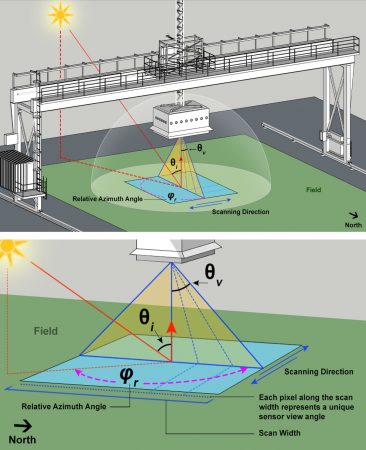
An article co-authored by Dr. Sidike Paheding, assistant professor, Applied Computing, has been accepted by IEEE Transactions on Geoscience and Remote Sensing, one of the top journals in the field with an Impact Factor of 5.6.
The article, “Data-Driven Artificial Intelligence for Calibration of Hyperspectral Big Data”, presents data-driven approaches to address the calibration challenges for utilizing near-earth hyperspectral data for agriculture.
Dr. Paheding is also an affiliated Assistant Professor of Computer Science and an affiliated Assistant Professor for the Computational Science and Engineering Ph.D. program. He is a member of Center for Data Sciences in the Institute of Computing and Cybersystems (ICC).
View the article and Paheding’s co-authors here. Download a PDF of the article below.
Abstract
Near-earth hyperspectral big data present both huge opportunities and challenges for spurring developments in agriculture and high-throughput plant phenotyping and breeding. In this article, we present data-driven approaches to address the calibration challenges for utilizing near-earth hyperspectral data for agriculture.
A data-driven, fully automated calibration workflow that includes a suite of robust algorithms for radiometric calibration, bidirectional reflectance distribution function (BRDF) correction and reflectance normalization, soil and shadow masking, and image quality assessments was developed.
An empirical method that utilizes predetermined models between camera photon counts (digital numbers) and downwelling irradiance measurements for each spectral band was established to perform radiometric calibration. A kernel-driven semiempirical BRDF correction method based on the Ross Thick-Li Sparse (RTLS) model was used to normalize the data for both changes in solar elevation and sensor view angle differences attributed to pixel location within the field of view.
Following rigorous radiometric and BRDF corrections, novel rule-based methods were developed to conduct automatic soil removal; and a newly proposed approach was used for image quality assessment; additionally, shadow masking and plot-level feature extraction were carried out. Our results show that the automated calibration, processing, storage, and analysis pipeline developed in this work can effectively handle massive amounts of hyperspectral data and address the urgent challenges related to the production of sustainable bioenergy and food crops, targeting methods to accelerate plant breeding for improving yield and biomass traits.